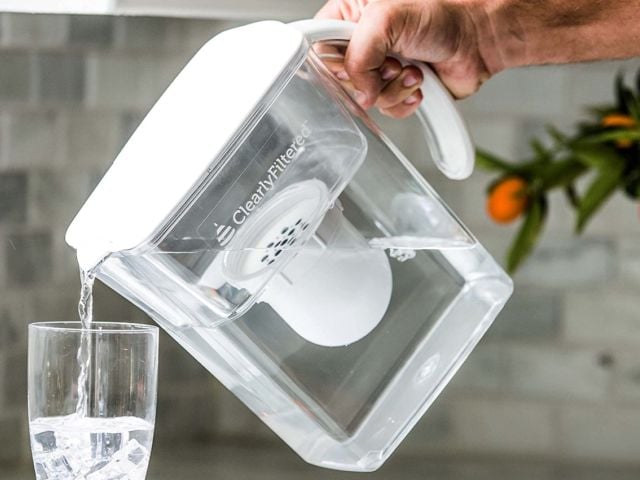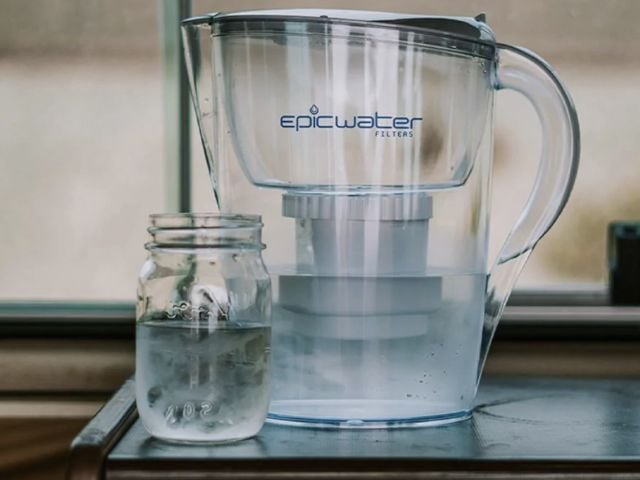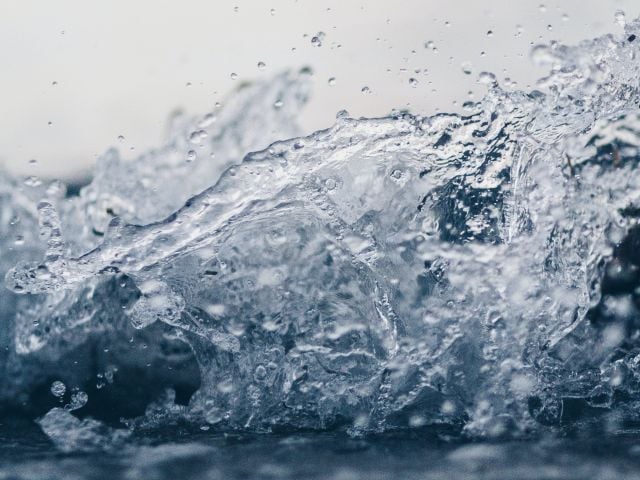
Overview
- New EWG testing found the forever chemicals known as PFAS in 18 states.
- The EPA is proposing to regulate some PFAS at levels found in the testing.
- Our latest results build the case for the EPA’s plan and more water tests.
Where we look for PFAS, we find them.
It’s a message EWG has warned about since our first, landmark map in 2015 showing the sheer scale of the drinking water contamination problem from the “forever chemicals” known as PFAS. More than 200 million Americans could have PFAS in their tap water, and we’ve established that at least 2,800 communities nationwide are affected by these chemicals.
EWG’s latest round of testing – based on residents in 18 states, from California to Connecticut, taking samples of their own tap water – reinforces that message.
The findings are just a small sample of what to expect when the Environmental Protection Agency releases first-time data from thousands of public water systems across the U.S. that is likely to show the full scale of the PFAS problem is magnitudes of order worse.
The latest testing found more PFAS not only in major cities like Austin, Texas; Denver, Colo. and Los Angeles, Calif. but also smaller communities like Glencoe, Il. and Monroe, N.J. In a number of communities, PFAS had not previously been reported. In some cases, the chemicals were at trace levels and in others are levels of concern to human health.
Most samples detected PFAS, including some that found the two most notorious and well-studied forever chemicals PFOA and PFOS.
Some of the PFAS detected are being targeted for regulation by the EPA. Certain PFAS have to be reported to the agency by public water systems under a provision in the federal Safe Drinking Water Act. And other forever chemicals, beyond the reach of the agency’s planned regulation or existing reporting requirements, are present in some water systems.
| Tested location | Zip code | Total PFAS parts per trillion |
|---|---|---|
| Berkeley, Calif. | 94708 | Not detected |
| Burlingame, Calif. | 94010 | Not detected |
| Coronado, Calif. | 92118 | 22 |
| Los Angeles, Calif. | 90025 | 9 |
| Los Angeles, Calif. | 90066 | 8 |
| Petaluma, Calif. | 94952 | 8 |
| Playa Vista, Calif. | 90094 | 2 |
| Richmond, Calif. | 94801 | 17 |
| San Anselmo, Calif. | 94960 | Not detected |
| San Francisco, Calif. | 94121 | 3 |
| Denver, Colo. | 80222 | 4 |
| Longmont, Colo. | 80501 | Not detected |
| Old Saybrook, Conn. | 06475 | 4 |
| Simsbury, Conn. | 06070 | 17 |
| Merritt Island, Fla. | 32953 | 6 |
| Atlanta, Ga. | 30307 | 11 |
| Glencoe, Ill. | 60022 | 13 |
| Fishers, Ind. | 46037 | 7 |
| Baltimore, Md. | 21201 | 10 |
| Baltimore, Md. | 21231 | 12 |
| Takoma Park, Md. | 20912 | 26 |
| St. Paul, Minn. | 55104 | 30 |
| Missoula, Mont. | 59802 | 3 |
| Monroe, N.J. | 08831 | 82 |
| Brooklyn, N.Y. | 11226 | 2 |
| Brooklyn, N.Y. | 11231 | 3 |
| Coraopolis, Pa. | 15108 | 30 |
| Pittsburgh, Pa. | 15228 | 8 |
| Nashville, Tenn. | 37212 | 8 |
| Nashville, Tenn. | 37216 | 4 |
| Austin, Texas | 78723 | 21 |
| Falls Church, Va. | 22041 | 16 |
| Redmond, Wash. | 98052 | 16 |
| Seattle, Wash. | 98104 | 3 |
| Elkview, W.Va. | 25071 | 7 |
| New Martinsville, W.Va. | 26155 | 40 |
On July 5, the U.S. Geological Survey released a PFAS study that estimated that 45 percent of the tap water in the U.S. could be contaminated with at least one PFAS compound. USGS sampled water from 716 locations, including 269 private wells and 447 public supply sites, and tested for 32 PFAS.
PFAS are known as forever chemicals as they never break down in the environment, and the threat to human health they pose is real and potentially catastrophic.
Very low doses of PFAS in drinking water have been linked to suppression of the immune system, including reduced vaccine efficacy, and an increased risk of certain cancers. PFAS are linked with increased cholesterol, reproductive and developmental problems and other health harms. Their presence in your water means you could be exposed to these risks.
Imminent data from the EPA could reveal the true extent of the PFAS problem, showing much more widespread contamination than we’ve previously been able to confirm.
The EPA readies data release
EWG’s latest testing data come just before the EPA is poised to release the first round of data from a rule that requires many water systems to test for the presence of 29 PFAS that are not regulated under the federal drinking water law – including some that would be regulated by planned EPA regulations.
The data is required under what’s known as the Fifth Unregulated Contaminant Monitoring Rule, or UCMR 5. All public water systems that serve communities of 3,300 or more people and 800 representative systems serving fewer than 3,300 people must monitor for specific contaminants in their water. UCMR 5 listed the more than two dozen PFAS that these public water systems must monitor, including PFOA and PFOS.
Results of the monitoring data will be released over three years, with the first round of data coming out in July. It’s expected to show thousands of new locations across the U.S. confirmed to have PFAS in their water, affecting millions more Americans than previously known. This dataset would likely support the estimate published by EWG scientists in 2020 that over 200 million Americans could have PFAS in their drinking water.
EWG’s landmark PFAS map established that there are more than 2,800 communities known to be plagued by these forever chemicals – but we’ve always said the true extent of the problem is likely much greater. The EPA’s upcoming data release is expected to back that up.
Our new testing found PFAS at levels covered by the UCMR 5 reporting requirements in some locations, and at levels below the reporting threshold in other areas. And in roughly half of the locations, we found some PFAS that aren’t covered by the 29 chemicals in the UCMR 5.
The data, combined with EWG’s existing work to extensively map the overwhelming scale of PFAS contamination across the U.S., should help make the case for the EPA to finalize its proposed first-time regulations to tackle forever chemicals in drinking water.
What the EPA is proposing
So what are those EPA regulations?
The Biden EPA is taking the first concrete steps in the agency’s history to tackle PFAS pollution. In March, it proposed bold new limits known as maximum contaminant levels, or MCLs, that restrict the amount of six individual PFAS that can be in drinking water: PFOA, PFOS, GenX, PFBS, PFNA and PFHxS. If finalized, this would be the first new MCL for drinking water contaminants by EPA in more than two decades, underscoring the significance of this action announced by Administrator Michael Regan earlier this year.
In addition to weighing health harms, these limits consider water treatment costs and feasibility. The proposed MCLs are 4 parts per trillion for PFOA and the same for PFOS. For the other four PFAS chemicals, the EPA is proposing a “hazard index,” which is a tool the agency uses to address cumulative risks from mixtures of chemicals.
While these are the first federal proposed drinking water limits for PFAS, 10 states, including Maine, Massachusetts, Michigan, New Jersey and New York, already have final or interim enforceable drinking water limits for PFAS.
Our recent water testing project had several locations where PFOA or PFOS were detected at varying levels above the EPA’s proposed limit. These communities include Monroe, N.J.; New Martinsville, W.Va.; and Corapolis, Pa., underscoring that contamination from PFAS is an issue that spans across the country.
Water filters can help
Are you concerned about PFAS in your tap water?
Until the EPA finalizes and implements its MCL, consider purchasing a water filter that can remove forever chemicals from tap water. It can be a workable option for removing PFAS from your water instead of drinking from the faucet, and some water filters are able to remove 100 percent of PFAS.
EWG has just released a guide to the best water filters for eliminating PFAS, with options for all household budgets and sizes. We measured how much each water filter was able to reduce PFAS, considering important factors such as the product’s cost and useful life.
Four water filters reduced the PFAS in the water used in our testing by 100 percent or came close, offering a great boost to your efforts to protect your family’s health. They include:
We had EWG staff try 10 different water filters in real homes using their tap water, and our guide covers every aspect, including how easy the products are to use and how long they last.
Water filters can be a great idea in particular for people served by water systems where EWG detected PFAS but at levels that would be below the MCLs, which means that the systems would not be required to take any action to try and remove or reduce the chemicals from the water.
Even in those communities that have PFAS detections above the MCLs, water filters can still be a good idea because even if the EPA finalizes the drinking water limits, it could take years before some water systems take the necessary steps to install PFAS removal technology.







